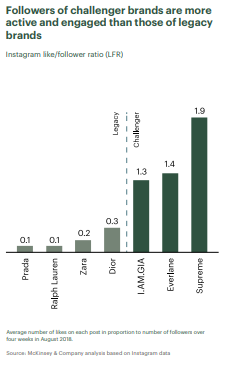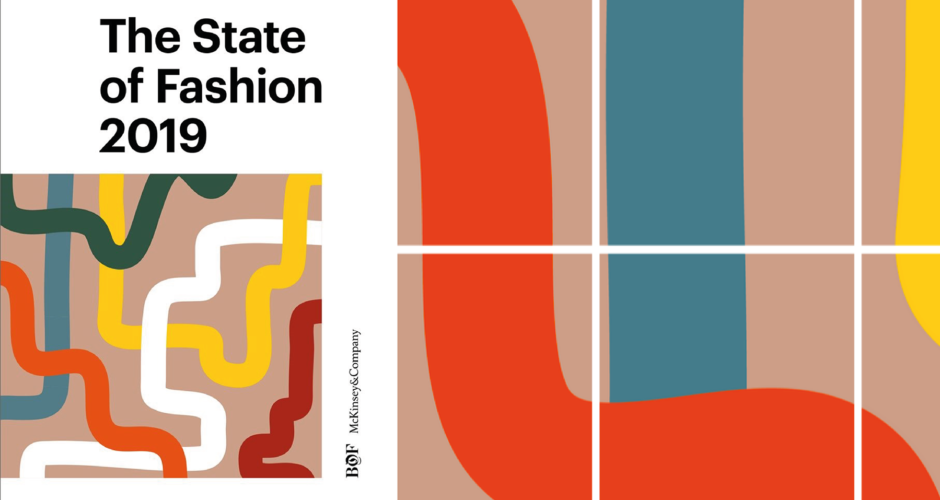Back again with Part 3 of What you need to know: McKinsey & BOF The State of Fashion 2019. Didn’t read part one or two? Check them out here! This series highlights the top trends in fashion for 2019 as identified by Business of Fashion and McKinsey & Company in their yearly State of Fashion report. The report is about 100 pages long, so I did all the legwork and packaged up the top trends for you. The report outlines 3 major trends in fashion systems in 2019. Check them out below!
1. Self- Disrupt
 The fashion industry, like many other industries, is experiencing an influx of challengers in the market. These challengers do things their own way and don’t believe is following the status quo. They are capturing consumers with their new outlook and have the potential to push old giants to irrelevancy.
The fashion industry, like many other industries, is experiencing an influx of challengers in the market. These challengers do things their own way and don’t believe is following the status quo. They are capturing consumers with their new outlook and have the potential to push old giants to irrelevancy.
What does this mean for fashion? To stay relevant, legacy brands have one option – self disrupt. Luxury brands are taking cues from fashion newcomers and increasing their digital presence and working with influencers to better connect with customers. The question is – how much change is too much for these legacy brands and will they be able to disrupt their old ways quick enough?
2. Digital Landgrab
 Fashion brands are not the only parts of the industry racing to change and innovate, ecommerce platforms are also competing to capture customers. E-commerce platforms compete with each other as well as brick and mortar stores and they need to use new technologies to differentiate themselves from other platforms.
Fashion brands are not the only parts of the industry racing to change and innovate, ecommerce platforms are also competing to capture customers. E-commerce platforms compete with each other as well as brick and mortar stores and they need to use new technologies to differentiate themselves from other platforms.
 What does this mean for fashion? There is going to be fast and significant advancement in e-commerce as platforms compete with each other to be the primary destination for consumers. Unique to fashion e-commerce, there is also going to be a focus on capturing clients through services they offer, not just with the products they sell.
What does this mean for fashion? There is going to be fast and significant advancement in e-commerce as platforms compete with each other to be the primary destination for consumers. Unique to fashion e-commerce, there is also going to be a focus on capturing clients through services they offer, not just with the products they sell.
3. On Demand
Small niche brands are taking advantage of new technologies to bring made-to-order merchandise to customers. This production style is significantly different than the one used by large companies catering to the mass market.
What does this mean for fashion? BOF and McKinsey predict that this will lead to a change in the way large companies cater to the mass market. Adopting made-to-order values will inevitably lead to a more efficient industry with less overstock and more small-back production.
Want to read more about these trends? Check out the full report here. Stay tuned for Part 3 of this series to see BOF and McKinsey & Company’s forecast of fashion system changes in 2019.





